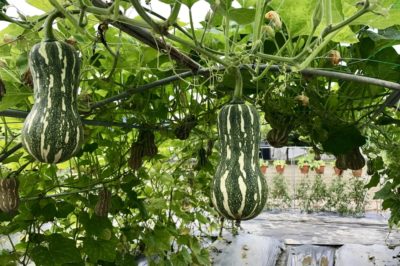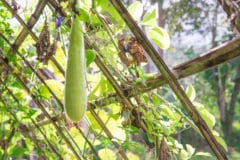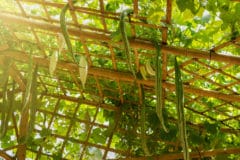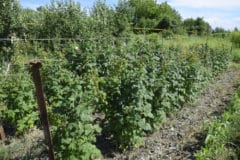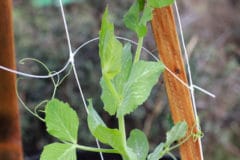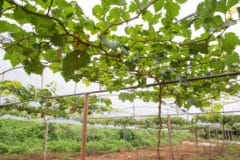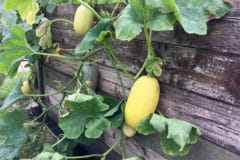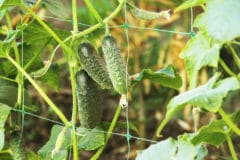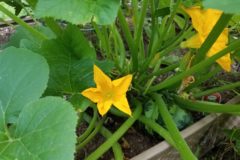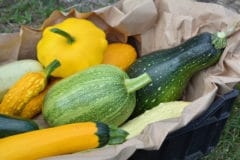Best Varieties for Vertical Growing
Any vining variety of squash can be grown vertically, but the heavier winter squash varieties can be a challenge. Heavy squash can break off the vine prematurely even when supported by slings. The vertical structure or trellis would need extra support also if the heavy squash is grown on it. Try growing these lighter vining squash varieties vertically:
- Zucchini
- Acorn
- Yellow, summer
- Delicata
Best Trellis Types
Garden trellis plans abound online and in books. From simple to sophisticated, there are trellises to meet every need. Squash plants require trellises made of heavy duty material. There are different ways to construct strong trellises.
Tunnel Trellis
The 4 by 16 feet cattle panel is perfect for making a tunnel trellis. Simply, pound two t-posts into the ground about three feet apart in the area where you will plant the squash. Do the same in the adjacent bed or row. Place the cattle panel inside the four t-posts forming an arch. Securely attach the panel to the t-posts.
Basic Trellis
Cattle panel fencing can be used to make a basic straight, upright trellis. About every four to six feet pound a t-post in the ground. Securely attach the fencing to the t-posts. The metal fencing can be cut to the desired size with wire cutters.
Circle Cage Trellis
Cattle panel fencing can also be used to construct a circular cage. Use wire cutters to cut the fencing to the desired length. Simply bring both ends together and attach in several places. To prevent the cage from falling, pound a t-post or sturdy stake in the ground against the cage. Then attach the cage to the t-post or sturdy stake.
Growing Vertically
As squash plants grow, gently weave the vines in and out of the fencing. Squash may require support as they become heavy. Slings made with old pantyhose or fabric can be helpful with supporting the squash. It may be necessary to tie the vines to the fencing also. To prevent damage to the vine, use old pantyhose or fabric that stretches as the vine grows.
Growing the squash vertically is the same no matter what type of trellis is used. The same spacing, water, soil, sunlight, and nutrient requirements of growing on the ground should be followed also. The only difference may be less fruit rot, pests, and disease.
